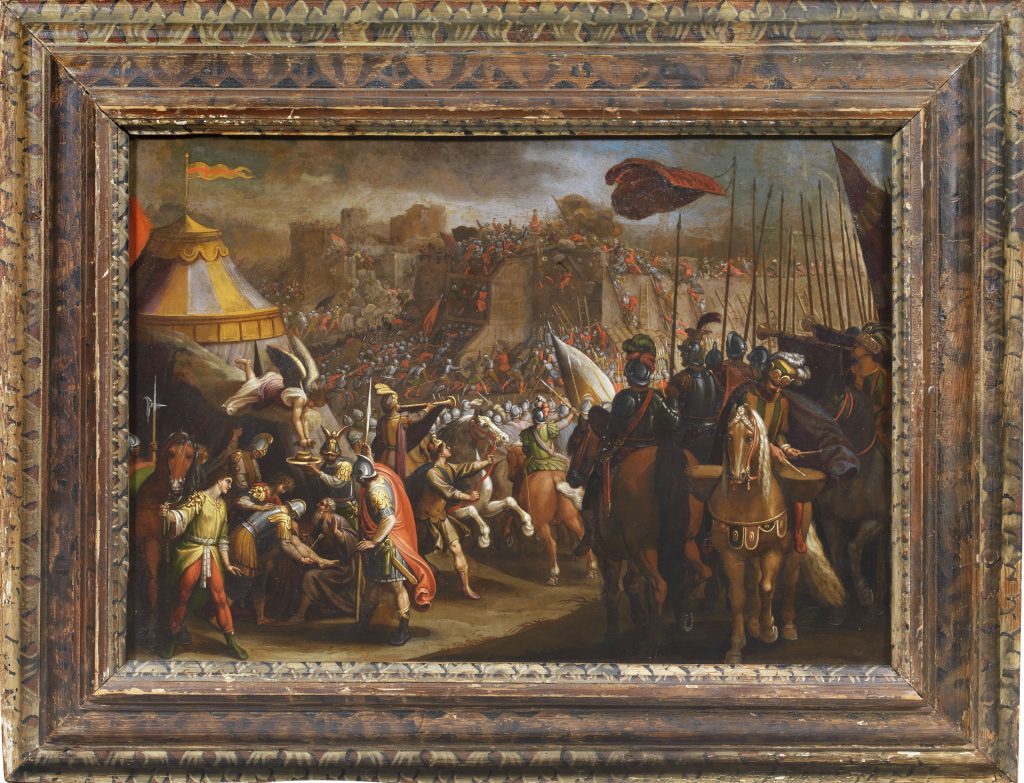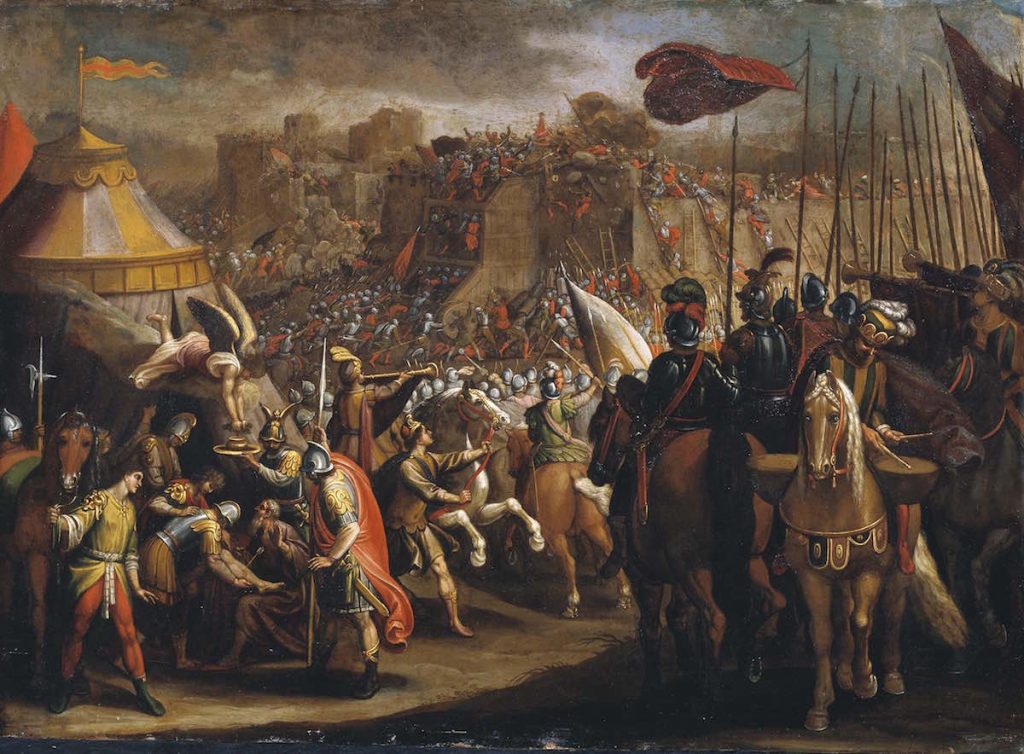ANTONIO TEMPESTA
Florence, 1555 – Rome, 1630
Godfrey of Buglione tended to by an angel
oil on copper, cm 51×71
This important painting on copper, of considerable size, decpits an episode of ‘Jerusalem Delivered’ by Torquato Tasso. The captain of the crusaders, Gottfried of Bouillon, wounded during the siege of Jerusalem (“when a lightning bolt flew at him and struck him in the leg and pierced it/into the most nervous part, where the pain is most acute” XI, 54) is miraculously healed by medicine brought by an angel. The faithful Eròtimo, who had tried in vain to heal the commander, exclaims to his lord: “L’arte maestra te non risana o la mortal mia destra, maggior virtú ti salva: un angiol, credo, medico per te fatto, è desceso in terra, ché di celeste mano i vedo i segni: prendi l’arme; che tardi? e riedi in guerra” (XI, 74-75).
Giancarlo Sestieri has attributed the painting to the Florentine artist Antonio Tempesta on the occasion of its publication for a recent exhibition curated by the scholar. An artist of fundamental importance for the seventeenth-century development of the ‘battle’ genre, Tempesta trained, according to sources, with Stradano and was Vasari’s assistant in the decorative enterprise of Palazzo Vecchio. He also produced a considerable number of engravings, among which the series inspired by Tasso’s work are particularly famous, one of which, albeit with considerable variations, is probably the source of our painting on copper. This painting can also be compared with autograph works by the master such as the ‘Battaglia tra Cristiani e Turchi’ and the ‘Battaglia tra fanti e cavalieri’ in the Florentine Galleries, published by Marco Chiarini and more recently, in 1999, by Sestieri.
Publications:
“Bellum. Battaglie nell’arte tra ‘600 e ‘700”, exhibition catalogue edited by Ferdinando Arisi, Comune di Mondavio, Pesaro Urbino, 1994, pp. 20-21.
“Pugnae. La guerra nell’arte”, exhibition catalogue edited by Giancarlo Sestieri, Budai Editore, Foligno, 2008, pp.18-19.
“I battaglisti – la pittura di battaglia dal XVI al XVIII secolo”, exhibition catalogue edited by Giancarlo Sestieri, De Luca Editori d’Arte, Tivoli, 2011, p. 20.
“L’eroe fuori luogo. La struttura dello spazio nella Gerusalemme liberata”, edited by Antonio Mileo, Paolo Loffredo Edizioni, Naples, 2020, p. 172, fig. 4.


